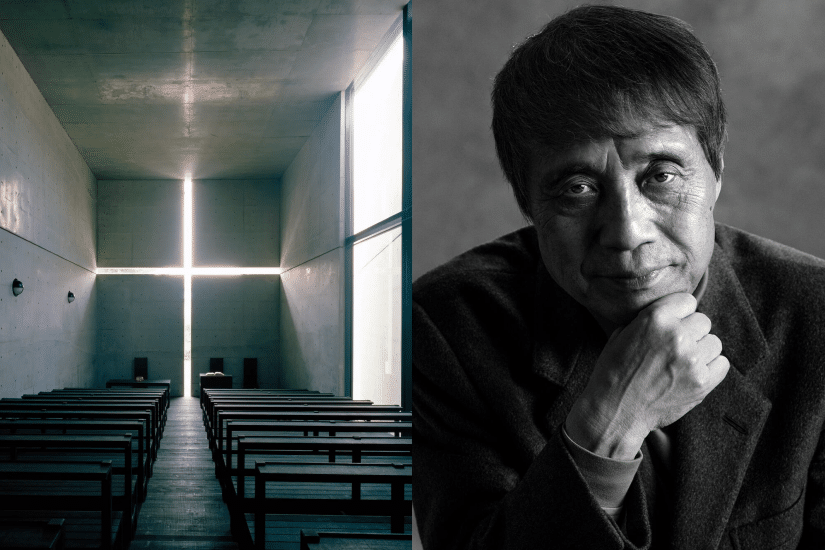The “Church of Light” (also known as the Church of the Hill of Kasuga in Tsuki) has always been a fascinating story in the architectural world. Designed by the renowned Japanese architect Tadao Ando, the official website recently announced its closure due to staffing and budget issues, no longer allowing visitors inside, which is a great pity.
The “Church of Light,” where light converses with God, is one of his masterpieces. Although it is regrettable to bid farewell, it is also a good opportunity to appreciate and follow the works of the architect Tadao Ando.
.png)
About Tadao Ando
Japanese architect Tadao Ando has a legendary growth story – before becoming an architect, he was a professional boxer, and later became a professional architect through self-study. In 1995, he won the Pritzker Architecture Prize, one of the most prestigious architecture awards globally, also known as the “Nobel Prize of Architecture,” and is an honorary professor at the University of Tokyo.
His creations are unique, excelling in using nature and geometric shapes to bring out a delicate and rich aesthetic, making him one of the most influential architects and a landmark that people worship!
Further Reading:
- 【Art March】Art Central 2024 Exhibition Guide!
- 【Art March】Eight Must-See Highlights of Art Basel 2024!
- Unraveling the Mystery of Planet Walala! Exclusive Interview with French Artist Camille Walala
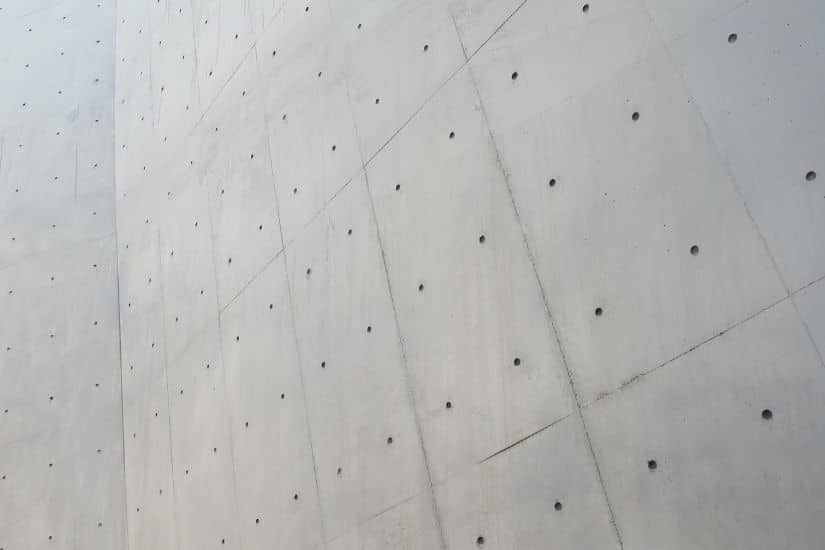
In his architectural designs, he has always loved to use “exposed concrete” as a building material, and is therefore known as the “poet of exposed concrete,” gaining great fame. He believes that exposed concrete is a symbol of the “most simple” material in modern architecture, capable of achieving a delicate balance between “nature” and “building,” adhering to the design concept of integrating and coexisting with architecture, people, and nature.
Among the many designs, people collectively refer to the “Church of Light,” “Church of Wind,” and “Church of Water” as the “Tadao Ando’s Church Series.” In this series of church designs, he reflects his thoughts and views on “sacred space” – believing that “sacred space” should be a place where human will and nature are combined through architecture. Unexpectedly, years later, news of the completion of the “Chapel of Poetry” was announced, further expanding his “church series.”
And these four churches all make full use of the elements of the local natural environment, combined with reinforced concrete architecture, creating a wonderful, unique, and sacred atmosphere, reflecting his understanding and emphasis on the surrounding architecture.
His Architectural Magic 1: “Wind Cathedral”
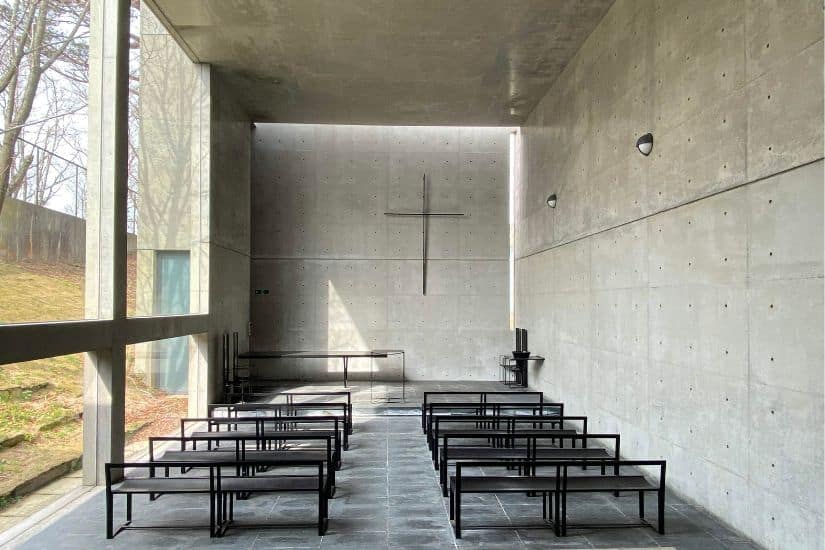
As the first piece of the Church series, “Church of the Wind” is one of the earliest works by Tadao Ando. Located in the Rokko Mountains in Kobe, Hyogo Prefecture, the “Church of the Wind” (also known as the “Rokko Church”) was completed in 1986. Initially built as a wedding chapel for a local hotel, it was later abandoned due to the hotel’s closure, but was eventually renovated, reopened, and put to use again.
Because walking into the long corridor in front of the church, the rectangular shape with entrances at both ends creates a wind tunnel effect, not only making the sound obvious, but also allowing one to feel the sea breeze passing through, hence its name.
The design of the “Wind Cathedral” is extremely minimalist, but due to the terrain, the church has a “concave” design. Extending from the cloistered entrance towards the main building, with walls and a bell tower, all constructed using exposed concrete and frosted glass, giving the building a simple and unadorned appearance. The serene and cold water pattern further highlights the changes in light and shadow – light shines through the semi-transparent frosted glass colonnade, reflecting large crosses or right-angled triangles as time passes, complementing the garden scenery outside the church windows, allowing one to feel the symbiotic relationship between humans and nature.
Under this sacred and solemn atmosphere, the foundation of the church architecture series was laid.
His Architectural Magic 2: “Water Cathedral”
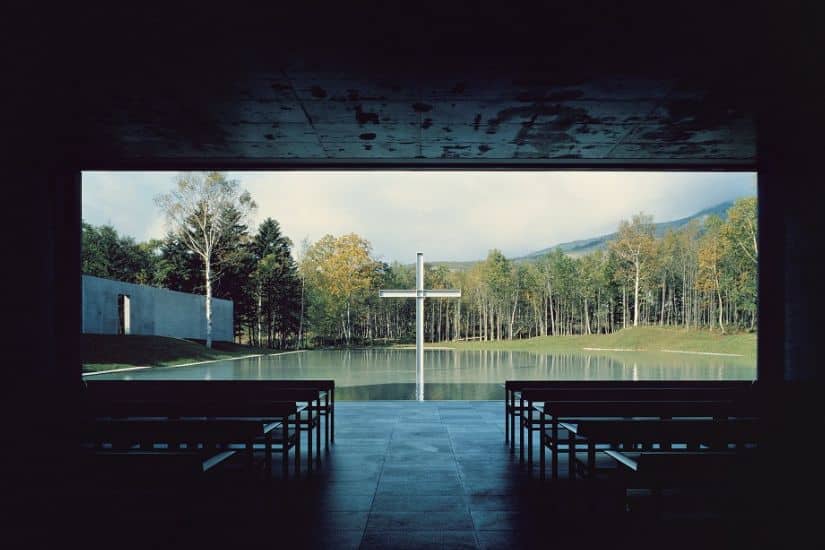
“The Water Chapel” is located in TOMAMU Resort in Hokkaido, Japan, completed in 1988.
With “natural symbiosis” as the theme, the “Water Church” is hailed as the “dreamy first choice for global wedding churches” because the front of the “Water Church” faces a quiet and gentle pond, with a huge cross seated in the pond, reflecting each other, both romantic and noble, elegant, and sacred, leaving a deep impression on people.
With a consistent minimalist style, using raw concrete as the basic material, along with transparent glass, steel frames, and simple building materials like wood, unique techniques such as cutting, stacking, and symmetry are used to integrate the architecture into the natural environment. As people are guided by the L-shaped raw concrete walls to slowly enter inside, although their line of sight is blocked by the walls, they can hear the sound of flowing water, slowly experiencing the charm of the “Water Cathedral” and nature with different senses. It seems to be a process of purifying the body, mind, and soul, allowing one to feel calm and pure.
-3.png)
What makes it even more special is that the “Water Cathedral” has different atmospheres and scenery between day and night, winter and summer. When the emerald green lake of scorching summer is covered with dreamy white snow, the nature outside the window blends with the architecture, reflecting the sacred and majestic feeling of nature and the cathedral, in accordance with different times and seasonal changes.
However, its unique and beautiful design has also been used as a filming location for the MV of the singer Fish Leong’s song “Admiration.”
His Architectural Magic 3: “The Cathedral of Light”
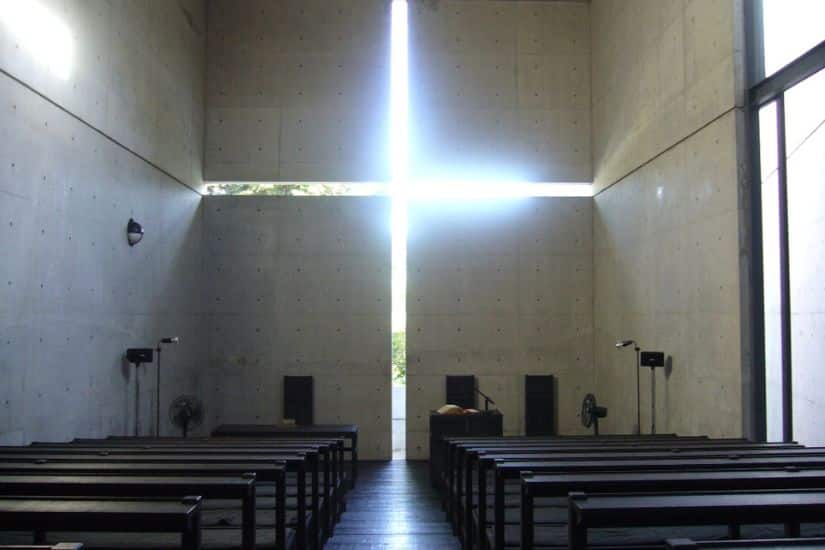
“The Church of Light” is located in Katano Hill, Ibaraki City, Osaka Prefecture, Japan. It was completed in 1989 and belongs to a Protestant Christian church for worship services.
As the name suggests, the “Church of Light” uses “light” and “shadow” to showcase the layers and atmosphere of the space – within the dark atmosphere of hard, cold exposed concrete, only sunlight can penetrate through the central wall of the space and through the gaps of the cross. The strong contrast adds to the mystery and allure of the cross symbol, unconsciously captivating people, echoing the description in the Bible that “God is light.”
As time changes, the reflection of the cross will also slowly change, showing how he applies the magic of light to religious architecture, making the charm between nature and architecture more vivid. The charm of nature and the simplicity and purity of space also profoundly present the sacred, pure, and awe-inspiring essence of light, vividly bringing forth introspection and tranquility from the depths of the heart.
The light of the cross cast on the ground, illuminating a small section of the church, from a macro perspective, it can be seen that the seats are higher than the altar, different from the usual church, the priest is not high above looking down on the congregation, implying the concept of equality for all.
For Tadao Ando, the “Church of Light” is a continuation of his impressions of light in the Pantheon and the Corbusier Chapel of Ronchamp, and it has become his ultimate work.
-3.png)
His Architectural Magic 4: “Poetry Church”
.png)
In 2021, the “Church Series” suddenly ushered in its masterpiece – “Church of Poetry”, and announced that the new building will be located in China, sparking anticipation!
From the design concept drawing, it can be seen that the “Poetry Hall”, which presents a minimalist geometric appearance using geometric principles and exposed concrete, also uses “green” and “water” as important design elements, projecting the changes of nature onto the building – at the confluence of two streams, surrounded by abundant greenery, with light and shadow weaving through the trees. The natural environment and the rich posture of the building make it seem as if one is naturally connected to the water and sky.
.png)
He blends architecture with nature, poetry with life, creating his “natural sound” in his heart, fully showcasing the extraordinary sense of the church.
“Ando’s architectural aesthetics are concise and powerful, not limited by environment or location, but rather enhanced by the beauty of the four seasons. Especially when bathed in light and shadow, his works exude a strong sense of poetry, making architecture a place where nature and humans connect and merge, often leaving people in awe and admiration. His series of church buildings are not only his masterpieces, but also classics in modern architectural history.”
And these church buildings also witnessed his journey from his prime to his old age, becoming his spiritual container, while his ideas and persistence still soar high, just like the famous saying of Tadao Ando: “From this moment, do not limit yourself, surpass yourself, and constantly challenge.” Even without any religious beliefs, at least we can all be like him, looking up to the light, worshiping the light, and seeking a place of spiritual tranquility.
Light, always there.
【*All images above are taken from the internet】

